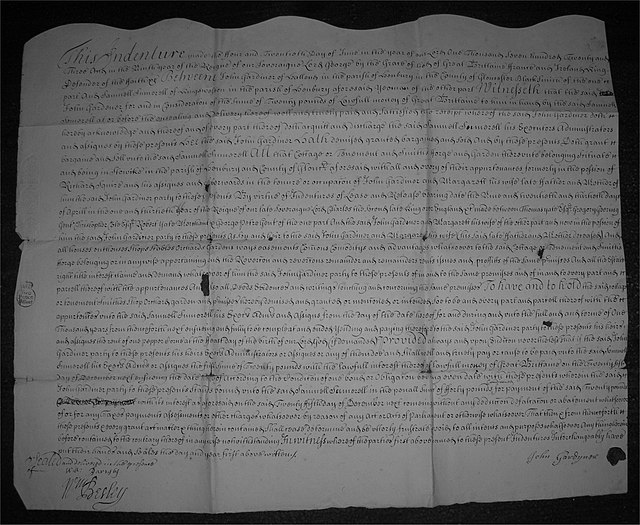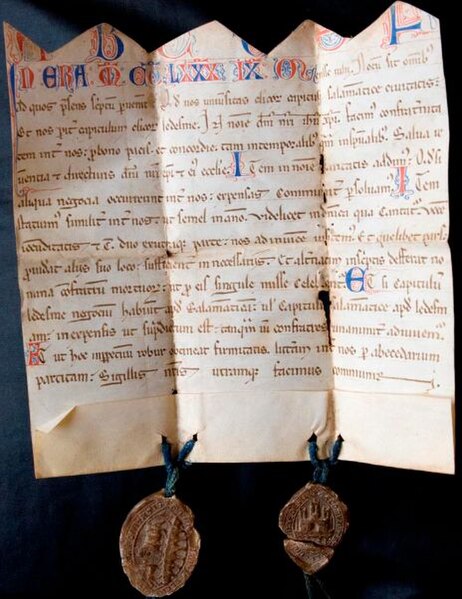A chirograph is a medieval document, which has been written in duplicate, triplicate or very occasionally quadruplicate on a single piece of parchment, with the Latin word chirographum written across the middle, and then cut through to separate the parts. The term also refers to a papal decree whose circulation is limited to the Roman curia.
An English property conveyance (a final concord) in triplicate chirograph form, dating from 1303. The word cirographum can be seen written twice, vertically and horizontally, along both cuts. The two copies of the agreement at the top were intended for retention by the two parties to the transaction; while the third copy (the "foot of fine") was for retention by the court that oversaw the process.
An indenture is a legal contract that reflects or covers a debt or purchase obligation. It specifically refers to two types of practices: in historical usage, an indentured servant status, and in modern usage, it is an instrument used for commercial debt or real estate transaction.
Half of an indenture document of 1723 showing the randomly cut edge at the top
Charter of the Clerecía de Ledesma, 1252
Tripartite indenture between William Shakespeare and the estate of the vendor of New Place, confirming the transfer of ownership to Shakespeare. The third portion (the foot) was retained in the court.




